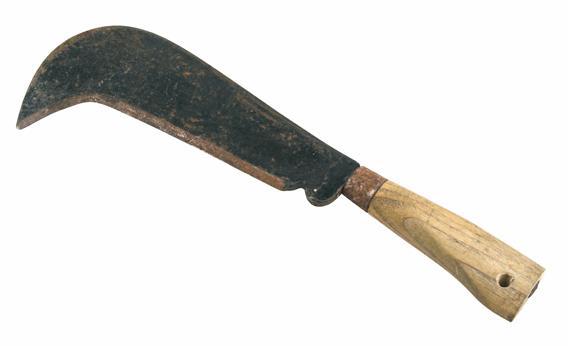The shooting spree that killed 12 people in an Aurora, Colo., movie theater on Friday has sparked a public debate about the availability of automatic weapons. Gun control advocates argue that mass murder is exceedingly difficult without them. One source told the Washington Post, “It’s kind of hard to be a pseudo-commando with a musket in the 18th century.” How did people commit mass murder before the advent of automatic weapons?
Often with fire. Revolutionary War veteran Barnett Davenport is widely considered the first mass murderer in U.S. history. On the evening of Feb. 3, 1780, Davenport burst into the bedroom of his employer, Caleb Mallory, and began to bludgeon Mallory and his wife with a club. When the club broke in two, Davenport beat the couple to death with Mallory’s gun. If Davenport had stopped there, he would be remembered as just an ordinary killer; most criminologists define mass murder as the killing of at least three people in a single incident. After beating the Mallorys to death, however, Davenport burned the house down, killing their three grandchildren.
Hundreds of other mass murderers have perpetrated their crimes without automatic firearms. Frenchman Pierre Riviere killed his mother, sister, and brother with a bill hook in 1835. In 1932, Julian Marcelino, a Filipino immigrant of relatively small stature, managed to kill six and wound 15 on a Seattle street using only a pair of blades. In 1915, Monroe Phillips shot seven dead and wounded 32 with a shotgun in Georgia.
Guns aren’t even the most lethal mass murder weapon. According to data compiled by Grant Duwe of the Minnesota Department of Corrections, guns killed an average of 4.92 victims per mass murder in the United States during the 20th century, just edging out knives, blunt objects, and bare hands, which killed 4.52 people per incident. Fire killed 6.82 people per mass murder, while explosives far outpaced the other options at 20.82. Of the 25 deadliest mass murders in the 20th century, only 52 percent involved guns.
The U.S. mass murder rate does not seem to rise or fall with the availability of automatic weapons. It reached its highest level in 1929, when fully automatic firearms were expensive and mostly limited to soldiers and organized criminals. The rate dipped in the mid-1930s, staying relatively low before surging again in the 1970s through 1990s. Some criminologists attribute the late-century spike to the potential for instant notoriety: Beginning with Charles Whitman’s 1966 shooting spree from atop a University of Texas tower, mass murderers became household names. Others point out that the mass murder rate fairly closely tracks the overall homicide rate. In the 2000s, for example, both the mass murder and the homicide rates dropped to their lowest levels since the 1960s.
A mass murderer’s weapon of choice depends somewhat on his victims. Attacks with guns, fire, knives, and bare hands are far more likely to be directed against family and acquaintances than total strangers, while mass murderers prefer to use explosives against people they don’t know. Also of note: Those who use firearms in a killing spree turn the gun on themselves 34 percent of the time, while only 9 percent of mass-murdering arsonists take their own lives.
Got a question about today’s news? Ask the Explainer.
Explainer thanks Grant Duwe, author of Mass Murder in the United States: A History, and Stephen T. Holmes of the University of Central Florida, co-author of Mass Murder in the United States.
Video Explainer: Why Don’t Firewalkers Burn Their Feet?
This video was produced from an original Explainer by L.V. Anderson.
Want more questions answered? You can now watch video Explainers at Slate’s News Channel on YouTube.
